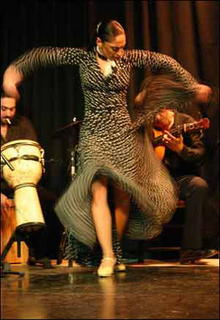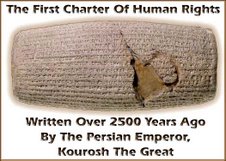>>Watch the report Channel 4
History The region now called Iran was occupied by the Medes and the Persians in the 1500s B.C., until the Persian king Cyrus the Great overthrew the Medes and became ruler of the Achaemenid (Persian) Empire, which reached from the Indus to the Nile at its zenith in 525 B.C. Persia fell to Alexander in 331–330 B.C. and a succession of other rulers: the Seleucids (312–302 B.C.), the Greek-speaking Parthians (247 B.C.–A.D. 226), the Sasanians (224–c. 640), and the Arab Muslims (in 641). By the mid-800s Persia had become an international scientific and cultural center.
Geography Iran, a Middle Eastern country south of the Caspian Sea and north of the Persian Gulf, is three times the size of Arizona. It shares borders with Iraq, Turkey, Azerbaijan, Turkmenistan, Armenia, Afghanistan, and Pakistan.The Elburz Mountains in the north rise to 18,603 ft (5,670 m) at Mount Damavend. From northwest to southeast, the country is crossed by a desert 800 mi (1,287 km) long.
Population (2005 est.): 68,017,860 (growth rate: 0.9%)
Capital and largest city (2003 est.): Teheran, 11,224,800 (metro. area), 7,893,700 (city proper)Other large cities: Mashad, 2,061,100; Isfahan, 1,378,600; Tabriz, 1,213,400
Climate and whether Iran has vastly varying climates depending on the season, and the part of the country. Iran has a variable climate. In the northwest, winters are cold with heavy snowfall and subfreezing temperatures during December and January. Spring and fall are relatively mild, while summers are dry and hot. In the south, winters are mild and the summers are very hot, having average daily temperatures in July exceeding 38° C. On the Khuzestan plain, summer heat is accompanied by high humidity. In general, Iran has an arid climate in which most of the relatively scant annual precipitation falls from October through April. In most of the country, yearly precipitation averages 25 centimeters or less. The major exceptions are the higher mountain valleys of the Zagros and the Caspian coastal plain, where precipitation averages at least 50 centimeters annually. In the western part of the Caspian, rainfall exceeds 100 centimeters annually and is distributed relatively evenly throughout the year.
Climate and whether Iran has vastly varying climates depending on the season, and the part of the country. Iran has a variable climate. In the northwest, winters are cold with heavy snowfall and subfreezing temperatures during December and January. Spring and fall are relatively mild, while summers are dry and hot. In the south, winters are mild and the summers are very hot, having average daily temperatures in July exceeding 38° C. On the Khuzestan plain, summer heat is accompanied by high humidity. In general, Iran has an arid climate in which most of the relatively scant annual precipitation falls from October through April. In most of the country, yearly precipitation averages 25 centimeters or less. The major exceptions are the higher mountain valleys of the Zagros and the Caspian coastal plain, where precipitation averages at least 50 centimeters annually. In the western part of the Caspian, rainfall exceeds 100 centimeters annually and is distributed relatively evenly throughout the year.

Miss Iran
Farhang ("culture") has always been the focal point of Iranian civilization. Most Iranians consider themselves the proud inheritors and guardians of an ancient and sophisticated culture.
http://www.answers.com/topic/iran
http://en.wikipedia.org/wiki/Iran
Democracy and reform
The role of youth
Women and society
Relations with the West
The media
The economy
The First Charter of Human Rights:
http://www.venusproject.com/Great_Persian_Empire/kourosh_the_great.html
Cyrus Cylinder: http://en.wikipedia.org/wiki/Cyrus_Charter_of_Human_Rights
http://www.parstimes.com/library/cyrus_cylinder.html
http://www.cais-soas.com/CAIS/History/hakhamaneshian/Cyrus-the-great/cyrus_cylinder.htm
http://www.farsinet.com/cyrus/
http://www.iranchamber.com/history/cyrus/cyrus_charter.php
The Bible is full of praise for Persia
Iran is a collection of nearly 80 different, yet culturally related, ethnic groups.
Music of Iran
http://www.iransong.com/
http://www.iranmania.com/fun/music/default.asp





No comments:
Post a Comment